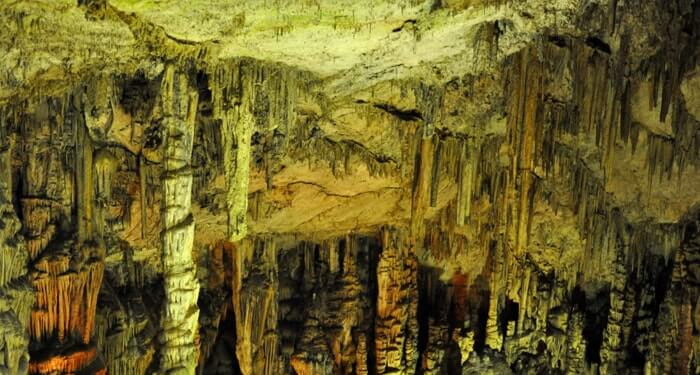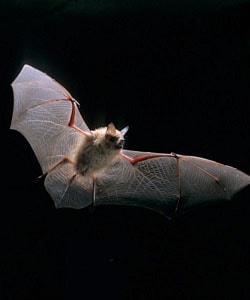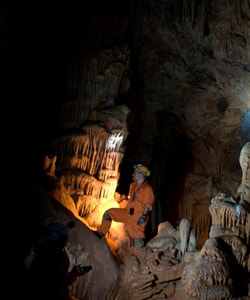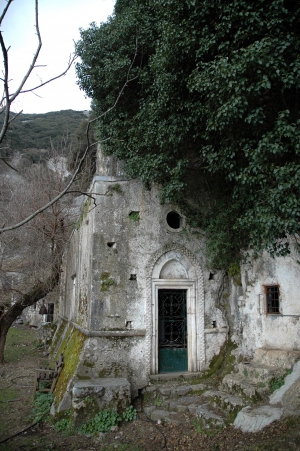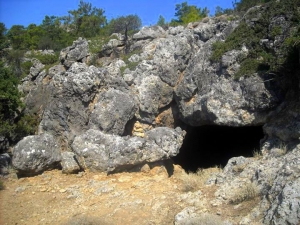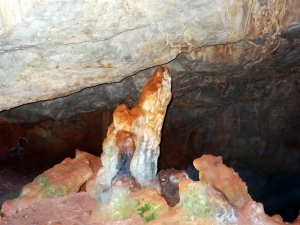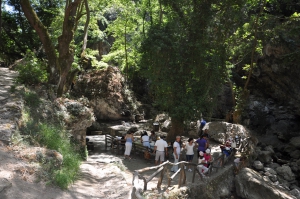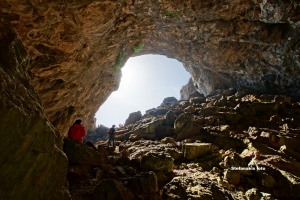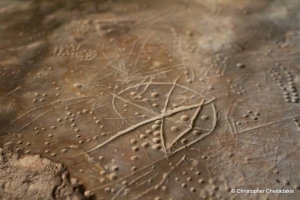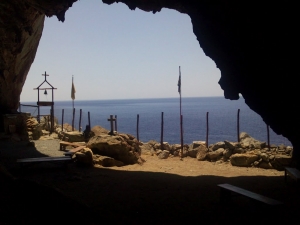The cave of Agia Fotini is on located on Mount Louloudaki, 7km south of Avdou village, at an altitude of 760m. 35km east of Heraklion is the Avdou village, where a sign "Agia Fotini Cave - 7 km”, shows the direction. From there you enter a dirt road, which leads to a small square below the mouth of the cave. Following the steep path on foot, the visitor arrives at the entrance of the cave.
The cave of the Cyclops Polyphemus is located between Sougia and Koustogerako settlements. The cave has no interesting decor, but one marble formation that reminds of a throne. The entrance is divided in two by a large rock, like the rock that was put by Odysseus in the cave of Polyphemus, the one-eyed cannibal Cyclops, before blinding him with a large wooden stick.
The cave of Pelekita is located at an altitude of 100m, at the foot of Traostalos Mount, well hidden within the bare rocks of the wild landscape of Zakros. The entrance of the cave is located 5 km northeast of Kato Zakros, in the position Pelekita or Sikia. To reach the cave, the visitor has either to walk one hour from Kato Zakros or one quarter by coming from the sea.
Today the cave hosts the beautiful church of St. Anthony, the patron of children, which is below the roofs of the Gorge. The cave and the gorge can be visited, since the Directorate of Forestry has organized the area.
The cave of Kamares, also called Kamaraiko, is located at the southern foot of Psiloritis. In particular, it is situated on the slopes of Mount Soros, at an altitude of 1700m and northeast of the homonym village of Kamares. It is not important in terms of speleology, but the minoan findings made the cave a very important archaeological site.
The cave of Eileithyia is located 7km east of Heraklion and 1 km southeast of Amnissos. It is formed on the eastern sides of the valley of Karteros, next to the old road that lead to Episkopi from Amnisos. The entrance of the cave is near an old fig tree. The cave was discovered during the last century. The locals also call it “Neraidospilios”, meaning the Fairy Cave.
Asfendou cave is located near the village of Sfakia, on a steep slope at position Skordalakia. The road connecting Asfendou with Kallikratis passes nearby and there is a plateau with an area of 2000 square meters in front. Skordoulakia cave is a very small rock shelter without woo much depth that barely fits two people and is located on a hillside at the beginning of the canyon Asfendou.






